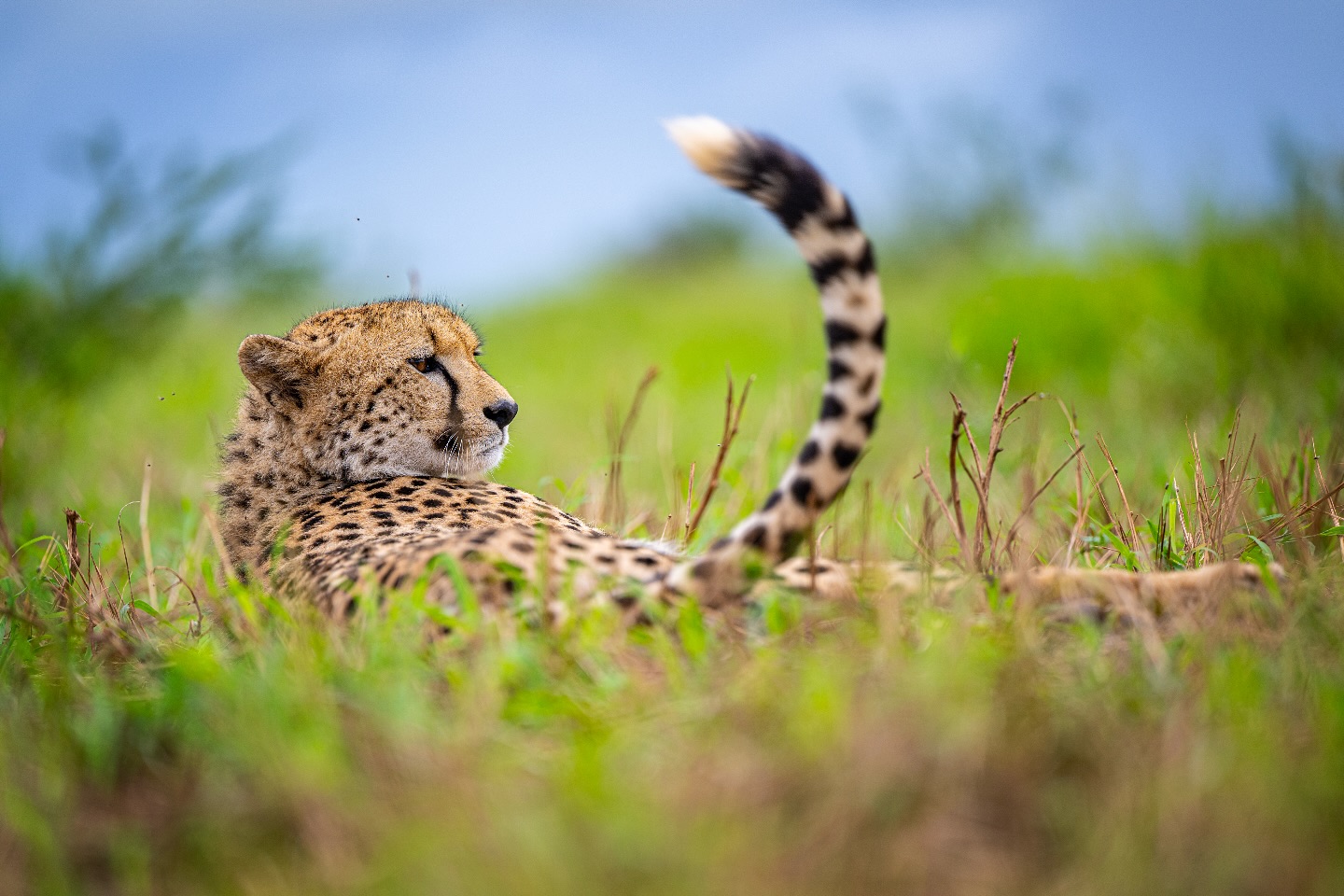An Underwater Legend On The Verge Of Hasty Extinction.
“New instincts, new roots, I am one out of 2,500 whose swim strokes make it to reproduce on these same beaches some 18 years later.” — a Leatherback hatchling exploring its new world.
The mighty Leatherback turtle, who had swum the oceans when dinosaurs roamed the earth more than a hundred million years ago, faces extinction.
During our late-night authorised rides along the iSimangaliso beach to find the turtles, the local conservationist Peter Jacobs educates me on these fantastic sea creatures.
Leatherbacks are the world’s biggest turtles. They can weigh up to a massive 1000kg and reach up to 3m in length. Their body is a dark, mottled blue-grey colour and the forelimbs are colossal. The leatherback turtle’s shell is delicate with a leathery texture, quite soft and flexible. Under their soft shell, they have a thick layer of insulating fat that keeps their body warm in the coldest waters.
Leatherback turtles can hold their breath for up to 90 min. Their soft shell allows them to dive down to cold temperatures of over 2,000 meters deep; and their soft shell enables the body to compress and expand depending on the depths.
These reptilian giants feed mostly on jellyfish and need to eat up to two-thirds of their body weight every day. Leatherback turtles don’t have teeth; instead, they have an oesophagus filled with hundreds of sharp pointy, backwards-facing spines called papillae that go down their oesophagus to their gut. Their powerful papillae help them to eat a large number of the slippery jellies and stop the jellyfish from escaping out of their mouth.
Leatherback turtles reach maturity after 15-18 years. After mating at sea, mature females will return to their natal beaches for nesting, while adult males live entirely at sea. A female Leatherback can store viable sperm from different males for up to four years.
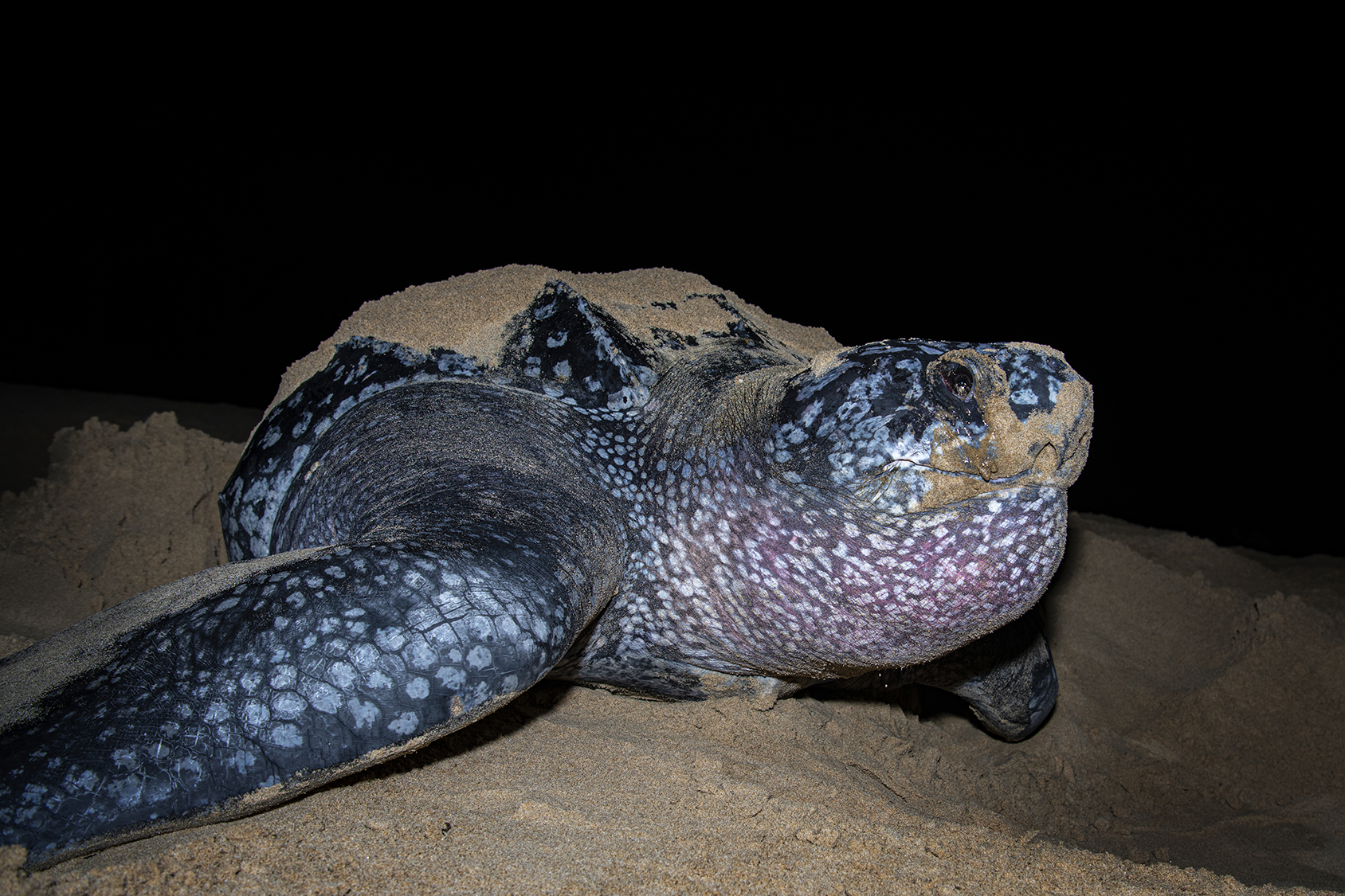
Their life cycle begins with a female turtle laying eggs on the nesting beach. Commonly at night, the ritual consists of excavating a hole in the sand, laying around 100-120 eggs per nest, covering the nest with sand and returning to the sea. Females stay close to shore for 3-4 months and come to the beach at 10-day intervals to lay eggs.
Adult females leave to the open sea to hunt for food and remain in the ocean for a ‘remigration interval’ of 2-5 years until they return to nest once again.
Excellent and fast swimmers, Leatherback turtles have the widest distribution of all sea turtles. They can be found in our Indian Ocean as far as the USA, Alaska and New Zealand.
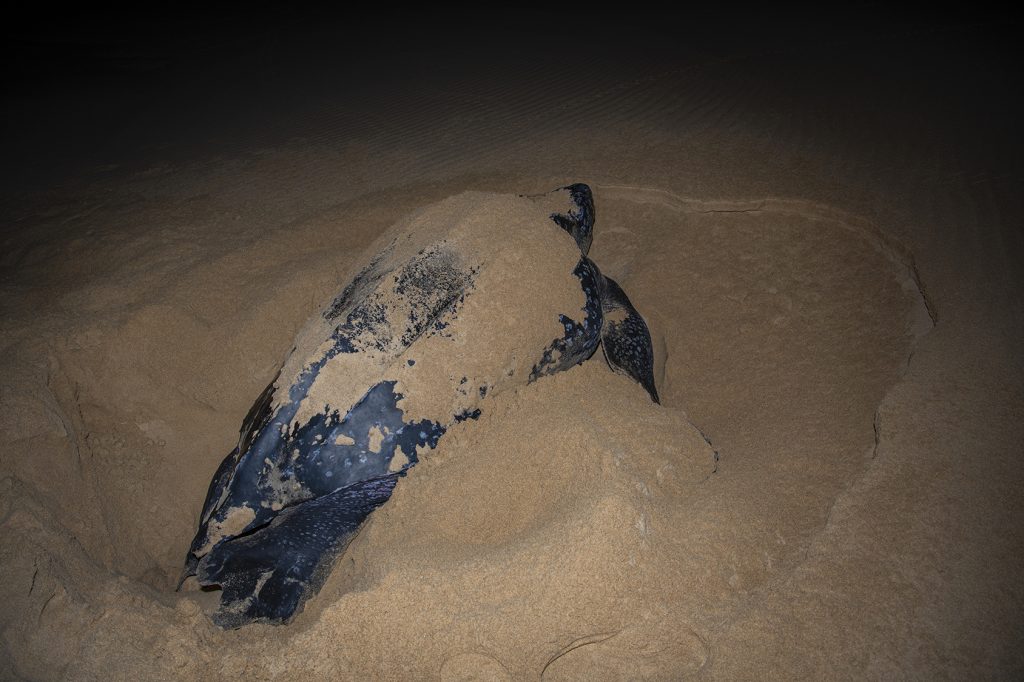
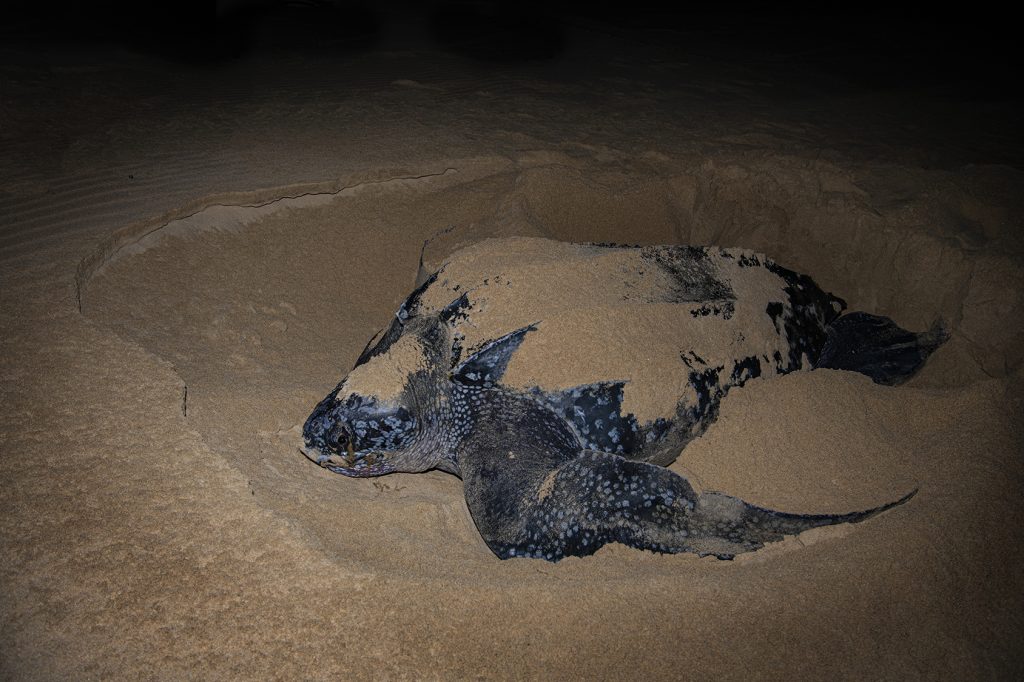
It’s only recently that scientists finally understood the soft ‘pink spot’ [pineal] in the Leatherback turtle’s head. It’s a passage, a window for light to reach a part of their brain that acts as a biological clock. This “skylight” allows the turtles to sense and time solar radiation that leads to changing seasons, and therefore turtles can tell when it’s time to migrate to warmer waters. Leatherbacks travel an average of 3,700 miles each way between breeding and feeding areas.
Studies suggest that Leatherback and other sea turtles use ‘magneto-reception’, detecting the earth’s magnetic fields, to navigate — a built-in GPS
South African waters are also home to four other sea turtle species, the Green Turtle, the Hawksbill, the elusive Olive Ridley and the endangered Loggerhead.
Both the local Leatherback turtle and the Loggerhead turtle will return to iSimangaliso to lay their eggs on the beaches where they were born.
Like crocodiles and other reptiles, the temperature of the eggs dictates the sex of the hatchlings; temperatures below 25 degrees celsius produce males, while 28 degrees celsius or higher results in females. Due to global warming, the male numbers have drastically decreased, and females are most at risk when they come ashore for nesting. Habitat loss, poaching, accidental capture (bycatch), and pollution add to all the major threats to their survival.
Since 2014, Peter Jacobs and his partner Themba Ndlovu have been operating the Ufudu Turtle Tours from Sodwana Bay, located on the Kwa-Zulu Natal coast of South Africa between St. Lucia and Lake Sibhayi.
“Apart from being registered concessionaires with the iSimangaliso Wetland Park Authority, we are also the only operator permitted to conduct turtle tours in the area,” says Peter. “We aim to make the tourist and the general public aware of the plight of our endangered turtles and their struggle for survival. We also strive to give the tourist a ‘once in a lifetime experience’ while focusing on the importance of the preservation and conservation of our wildlife and the environment.”
Ufudu Turtle Tours operates within a world heritage site. They are governed by the iSimangaliso Wetland Park Authority, with specific guidelines to preserve and conserve the environment while promoting tourism in the area.
The tour season runs from November to May every year, and they offer beach drives around the low tide times and only in the evenings or late at night when the turtles emerge from the ocean to nest. The nesting season is usually from November to the end of February, and the hatching season is from the middle of January to the end of April each year. All nests are GPS marked to increase sightings of the hatchlings as they make their way back to the ocean.
Southern African beaches are home to two of the seven spaces of turtles, the endangered Leatherback and Loggerhead turtles, who return yearly to lay their eggs on these beaches.
Restrictions on pedestrian and off-road vehicle activity to protect seasonal beach-nesting species should be something everyone can accept and support; unfortunately, this isn’t the case. There are still many Indian Ocean beaches in South Africa that allow motor vehicles onto the beaches where endangered species such as the Leatherback and Loggerhead turtles come to nest every year.
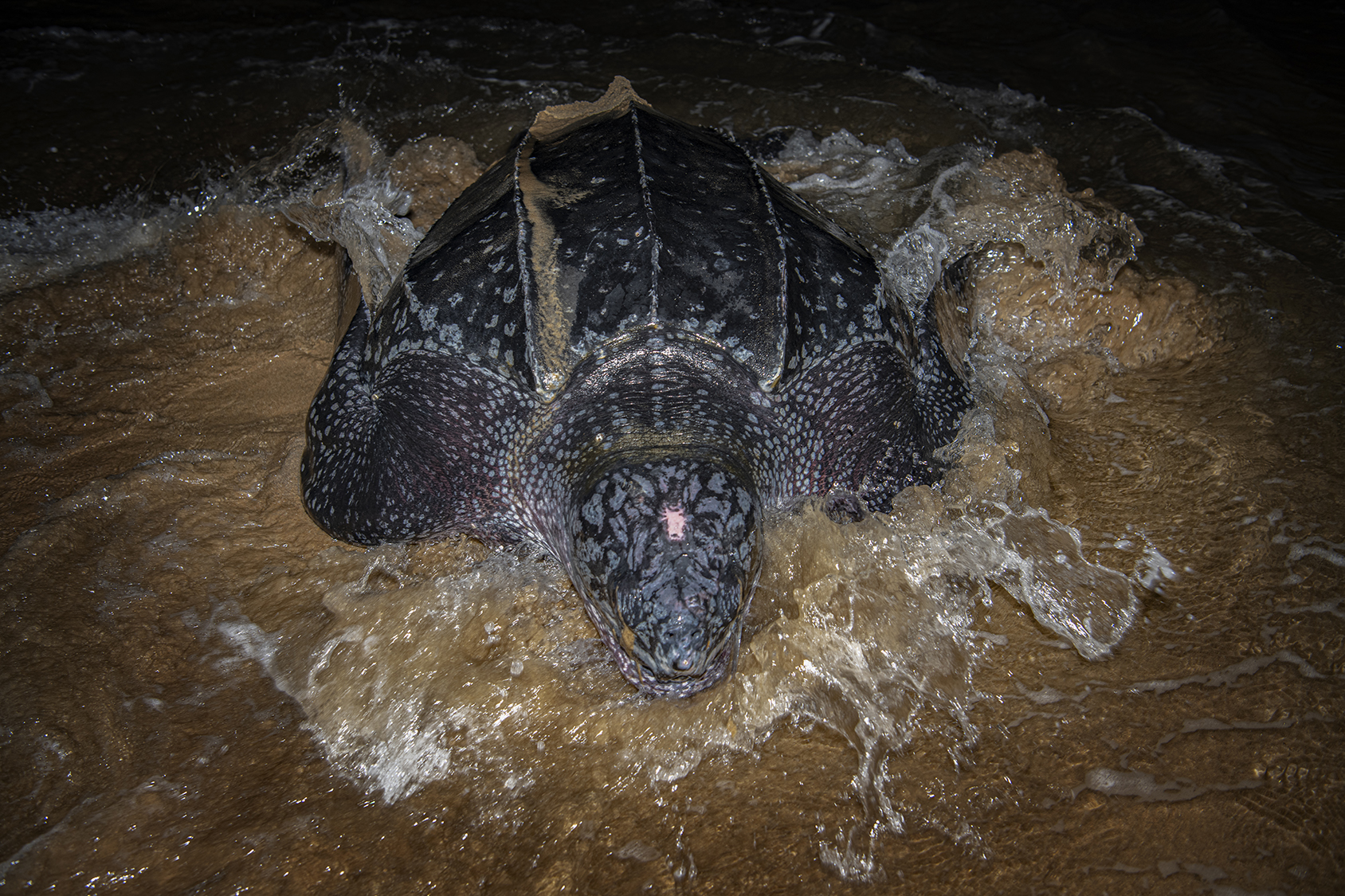
Not all sea turtle nests hatch.
Leatherback eggs incubate for 70-75 days before hatching. There are four stages of hatchling development: stage zero is no development, stage one shows signs of blood vessels forming, stage two, the beginning of an embryo with pigmented eyes is evident, and stage three is a fully pigmented embryo.
The reasons that a nest fails to hatch are a handful. Wildlife predators, cars on the beach driving over the nests, poachers, climate change and sometimes the turtle might have just laid infertile eggs.
Climate change has, over the years, become a common reason why nests fail to hatch due to the temperature of the sand. Although hotter sand can develop embryos faster, there is a fine line between warm sand speeding up the incubation period and sand being so hot that it dries out the eggs, sapping the nest of vital moisture.
Intense storms push seawater higher up on the beach than average, which floods sea turtle nests, causing the embryos in the eggs to drown.
Changing humidity levels also affect gas exchange and potentially increase bacteria growth, threatening the eggs with a fatal infection.
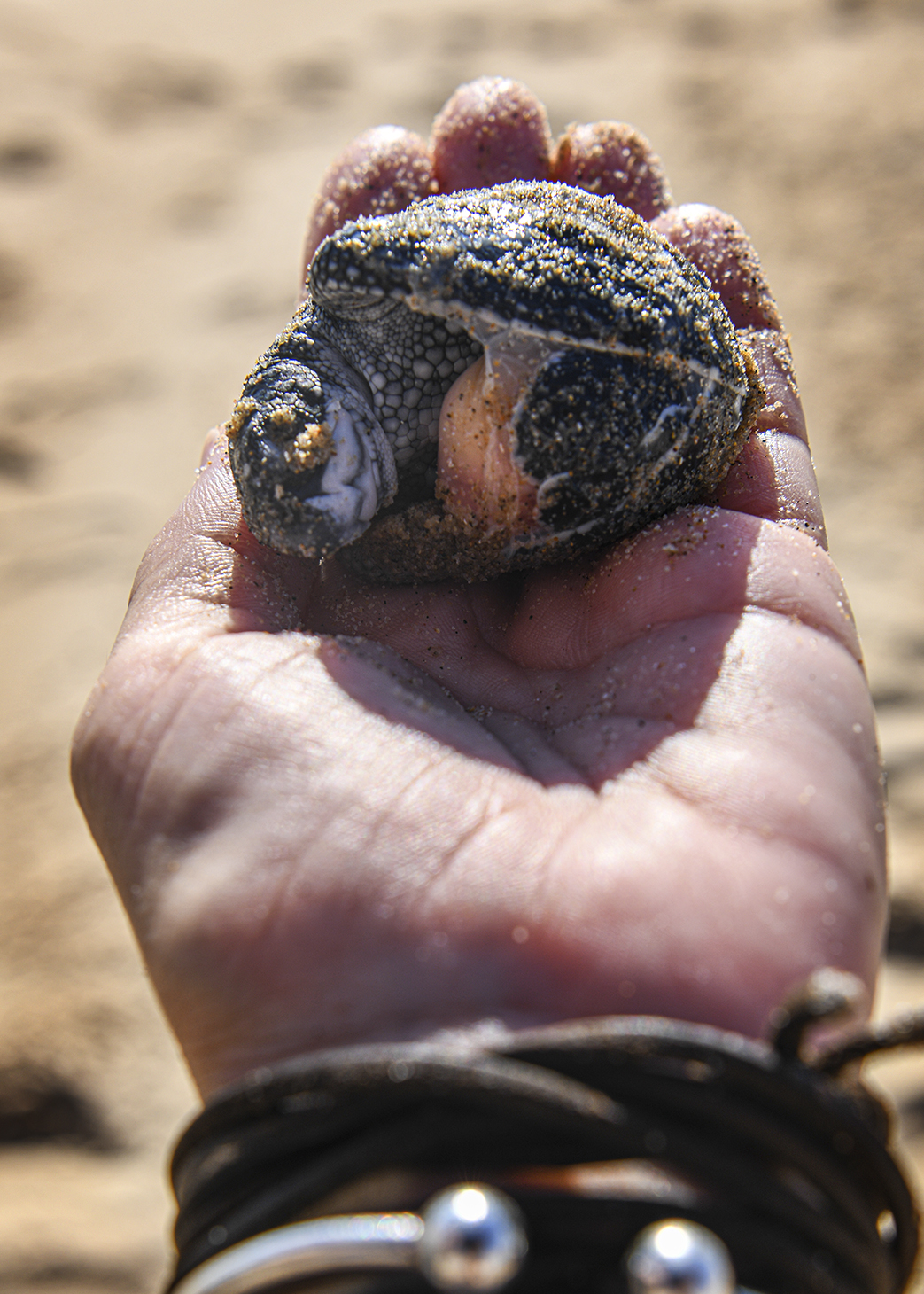
It’s estimated that only about one in two and a half thousand Leatherback turtle hatchlings survive to adulthood. Tyre ruts left by vehicles add to the survival challenges the already vulnerable hatchlings face. If they don’t make it to the ocean fast, crabs and other predators will catch and kill the hatchings. Eggs are often taken from the nest by poachers for ‘muti’ or traditional medicine practice, and the hatchlings are used as fishing bait
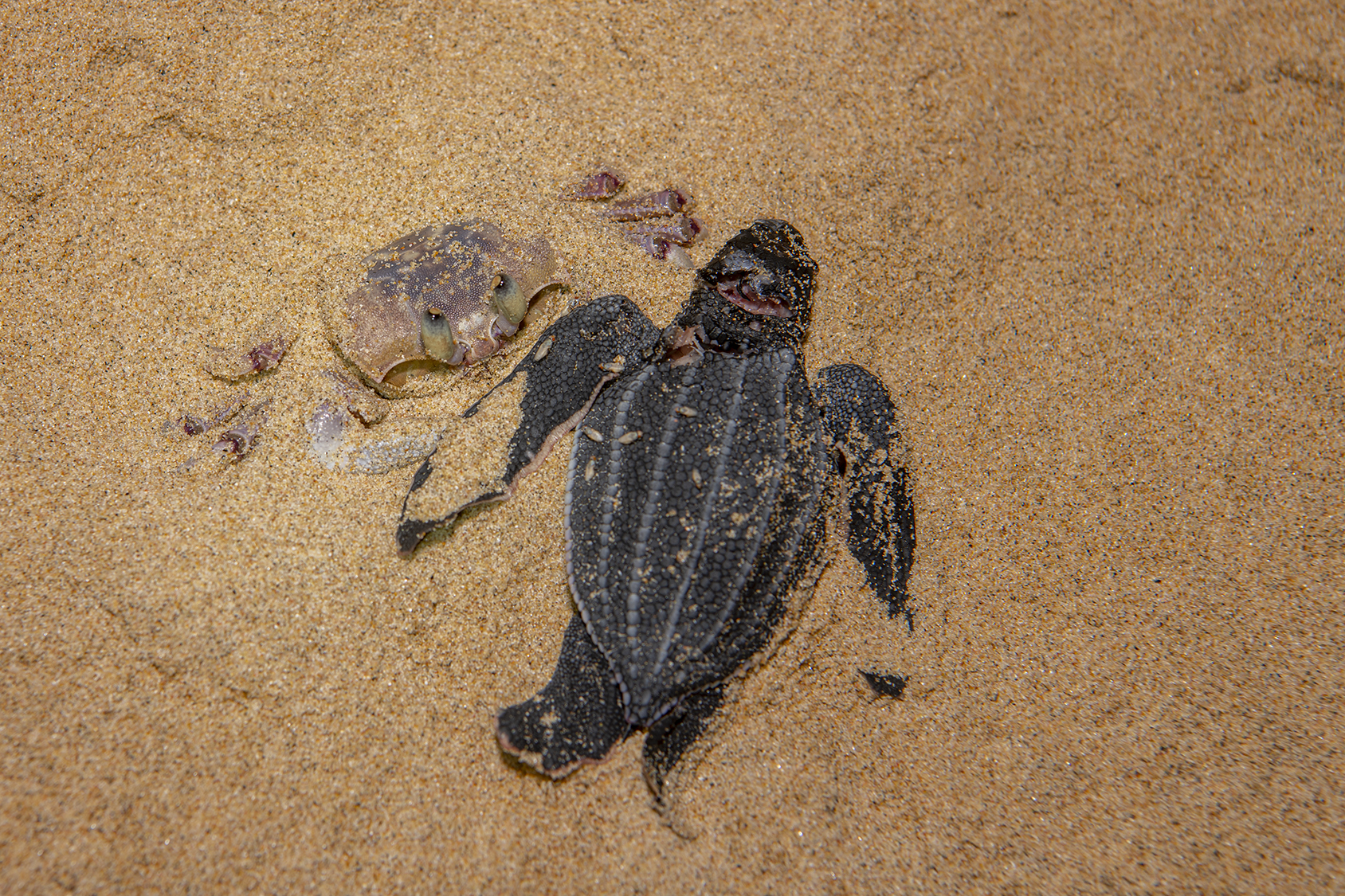
Hundreds of thousands of sea turtles fall victim to fishery ‘bycatch’ or accidentally get entangled in abandoned fishing nets every year.
Trapped in the mass fishing nets, the turtles get dragged through the water with no access to the surface to breathe, causing them to drown. Others die from ingesting plastic debris that looks like jellyfish when floating in the ocean.
The last three stages towards animal extinction are: critically endangered, extinct in the wild, and extinct. Leatherback sea turtles are just one stage away from extinction. They are adapted to live in the open sea without boundaries, and it’s very difficult to keep them in captivity; not only do they require a steady diet of jellyfish, but they also aren’t able to swim in a reverse direction and constantly swim into the walls of a holding tank.
Once upon a time, our oceans were the world’s largest wildlife reserves. Destruction of habitat and pollution are the biggest causes of all current extinctions. Our planet earth can’t operate without a healthy ocean, and we humans rely entirely on this finely tuned life-support machine. As species disappear, their extinctions will directly affect our health and our chances of survival as a species.
“Humans, are the most intelligent species on earth, but we are also the most destructive ones,” says Peter.
Mindful Preservation And Conservation.
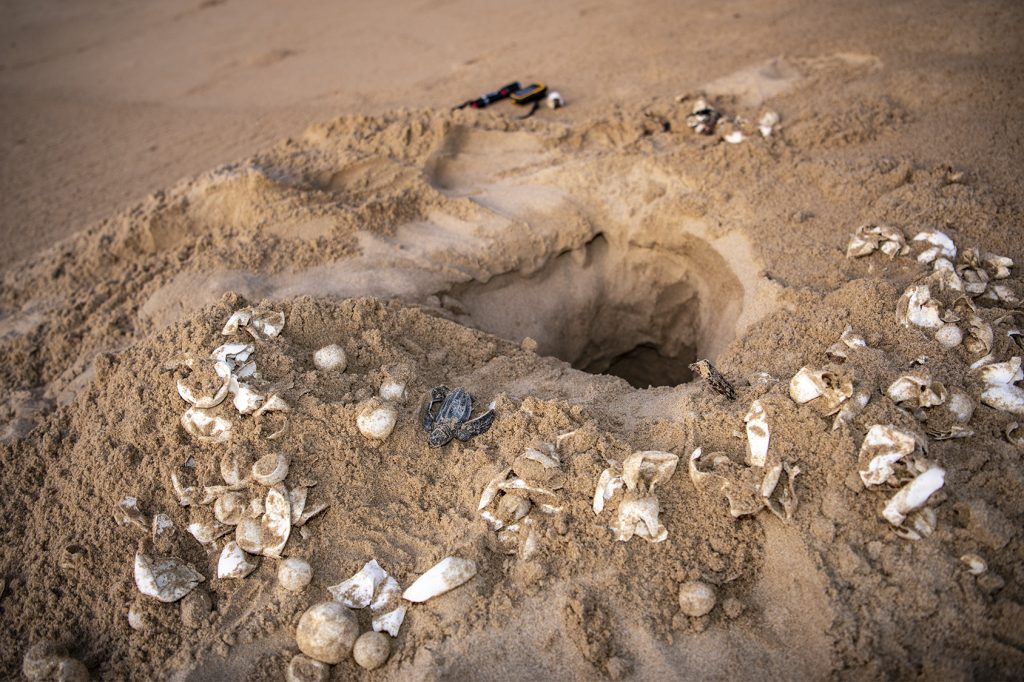
When digging hatched nests for research purposes, conservationists first feel in the sand for any live hatchlings that may not have made it out of the nest with their siblings. These left-behind ones are often called ‘dead ones’- they would have just died if never found.
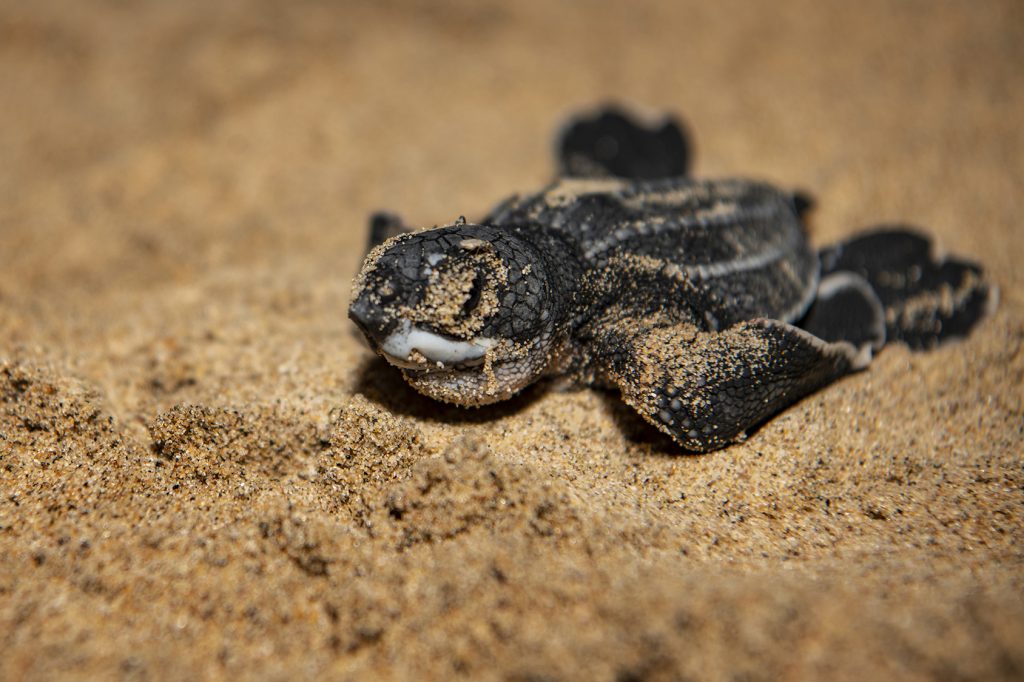
Live hatchlings found in the hatched nest are immediately set free so that they can make their way into the ocean. If found during the day, it’s best to keep them rehydrated in a bucket of wet sand and release them at night to improve their chances of outpacing predators.

Join LensTraveller On A Journey Of Discovery. Stay updated with the latest travel adventures, inspirations and insights.
*By subscribing you agree to our Terms &Conditions and Privacy & Cookies Policy.
